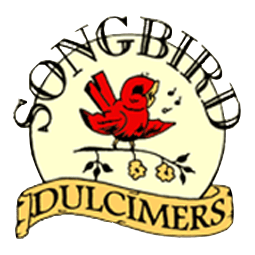FAQs
If you are new to the hammered dulcimer, you probably have a ton of questions. We love answering questions and helping people get enjoyment from playing the hammered dulcimer. Below are answers to some of our most frequently asked questions.
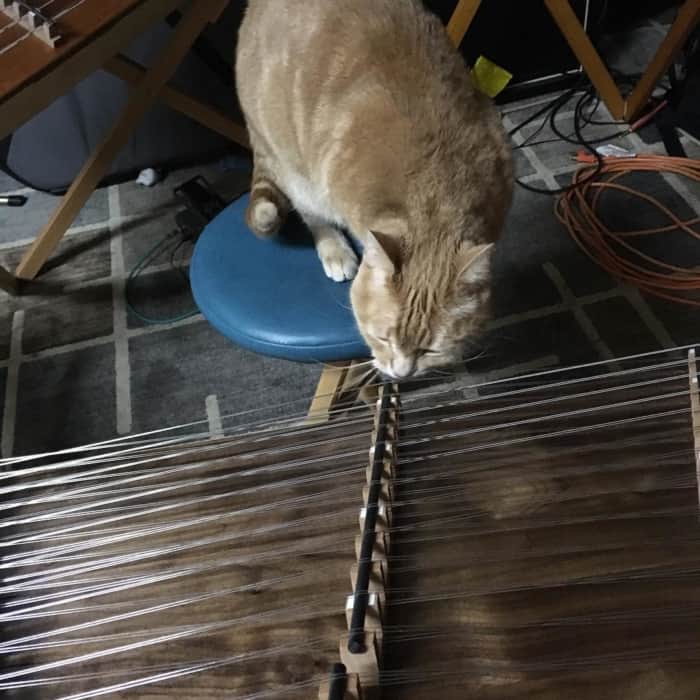 Q: I don’t have any musical background. Is a hammered dulcimer hard to learn to play?
Q: I don’t have any musical background. Is a hammered dulcimer hard to learn to play?
A: Not at all! We are all hardwired to make music. All you need is passion, patience, and persistence! You will find that learning the hammered dulcimer can be very intuitive, and if you are drawn to it, you will start learning chords and then playing your favorite songs in no time. If you have no previous musical experience, the progress will only be slower, but it will still be fun! What is important is not how good we get, but that we are enjoying playing and learning. Then we improve naturally! Additionally, there are also many experienced and patient teachers and free video lessons to help you along your way.
Q: I don’t read music. Do I have to learn to read music to play the hammered dulcimer?
A: No! Some of the best players we have met don’t know how to read music. In fact it is difficult to play the hammered dulcimer and watch a page of music at the same time. There are some who can, but we can’t, we have to watch our hands! Reading music can be a useful tool, and we highly recommend it. But it is just like being able to read a book. People who can speak don’t always know how to read a written language, and music is the same. The hammered dulcimer is mainly an instrument you play by ear. You figure out how to play songs on it that you already know, and you know hundreds. We do read music, but for the hammered dulcimer, we only use it to learn unfamiliar tunes, then once we know the tune we don’t read the music.
Q: I do read music, but where do I get sheet music for the hammered dulcimer?
A: There are lots of good dulcimer arrangements of familiar songs on the internet, or in books mostly published by Mel Bay. However, you can use any music for the hammered dulcimer as long as it is in the dulcimer friendly keys of C, G, D, A or the relative minors of these. Music in other keys would need to be transposed into dulcimer keys, which you can do on the fly once you get the hang of it. If you are using piano music you’ll need to read the melody line only, and find harmony notes to go with that when there is opportunity. Since you only can play at most two notes at a time on the hammered dulcimer you can’t make the full chords written in the piano music.
Q: What is a course on the hammered dulcimer?
A: A course is typically a pair of two strings that make up each note. The two strings are side by side and are tuned in unison. Doubling up the strings make the note louder. There are some hammered dulcimer that have one string per course (like our Fledgling one string version), while there are other hammered dulcimers out there that may have three or four strings per course. Check out our blog post on the variations of the hammered dulcimer around the world that can have up to eight strings per course!
Q: What do the numbers mean before the name of the hammered dulcimer?
A: You’ve probably seen hammered dulcimers with confusing numbers like 13/12 or even 15/14/7/6 . These numbers represent how many courses are on each bridge. The first number represents how many courses are on the treble bridge. The second number represents how many courses are on the bass bridge. There are some dulcimers that have extra bridges. For those bridges on our dulcimers, the 3rd number represents the courses on the chromatic bridge. If it has a fourth number, that represents how many courses are on the extended range bridge. So, 13/12 means 13 courses on the treble and 12 courses on the bass bridge. 15/14/7/6 means 15 courses on the treble, 14 on the bass, 7 on the chromatic, and 6 on the extended range bridge.
Q: Is it hard to tune a hammered dulcimer?
A: No, it may just seem a bit tedious. The first couple times you tune your dulcimer it will take a while, and you might think it was difficult. But you get really good at it really quick, and soon you don’t even think about it. Once you are there, it will take about five minutes to tune your hammered dulcimer! Check out our tuning blog post and tips post to better understand how easy it is to tune your dulcimer. All you need is your tuning wrench, tuning chart (which comes with your dulcimer), and tuner. Using a chromatic electronic tuner makes it extra easy. Or you can use a tuner app!
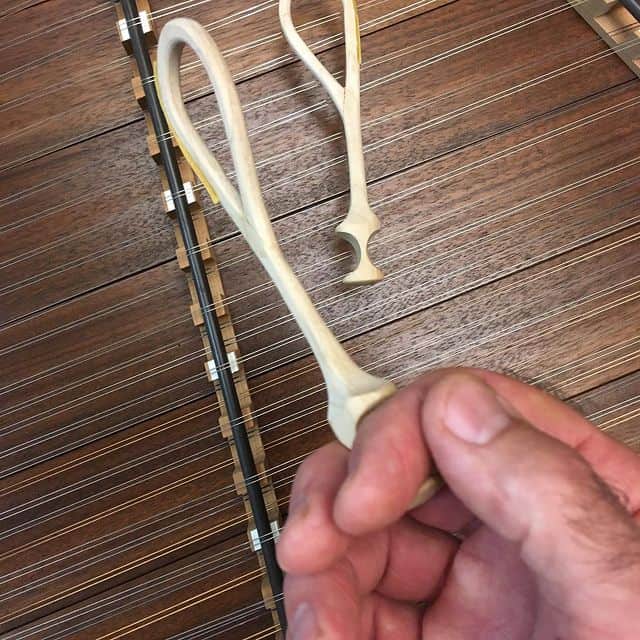 Q: I was tuning my dulcimer and broke a string. Where can I get replacement strings for my hammered dulcimer?
Q: I was tuning my dulcimer and broke a string. Where can I get replacement strings for my hammered dulcimer?
A: Just send us an email telling us what gauge string you broke (the tuning chart lists the gauge of every string), give us your address, and we’ll put one in an envelope and send it off to you no charge.
Q: How often do I have to change hammered dulcimer strings?
A: Almost never. Since you don’t play with your fingers like you would a guitar, the strings don’t get dirty and oily, so they won’t corrode. They are also for the most part bright steel which resists corrosion. However, strings do eventually wear out. If you are playing for many hours every day, or you live in a corrosive environment, like down by the sea, you’ll need to change the strings when it seems difficult to get them to tune right, or they don’t seem to sound right. Then a new set can definitely be a good idea.
Q: Is there a guarantee on your hammered dulcimers?
A: Yes. We list 2 year guarantee on our web site, but we don’t send out any paperwork reflecting that. In reality, if anything goes wrong with one of our instruments, we want to know about it. We learn something every time, and sometimes it shows us that a change needs to be made to the designs. So we have taken care of some pretty old stuff (older than 2 years). So that makes the guarantee more of a lifetime one… Chris’ lifetime. Of course, if you weren’t the original owner, or something happened that was not our fault, a repair won’t be free, but contact us, we’ll help you.
Q: There isn’t anybody around here who plays these. Where can I find others who play the hammered dulcimer?
A: A good place to ask about that is the Hammered Dulcimer Players group on Facebook. It is very active. After you have joined, you can ask all sorts of questions and will get good answers. Ask where the nearest dulcimer festival to you is (or check the festivals listed on the interactive map below). Dulcimer festivals are always teaching festivals with classes on any aspect of playing from very basic intro to advanced. You can learn a lot, and will also meet many new friends and find out about other opportunities. You will come home full of ideas and all charged up! There is also a Beginning Hammered Dulcimer Players group on Facebook that has an interactive map of other hammered dulcimer beginners throughout the world!
Here is a interactive map to help you find hammered dulcimer festivals, teachers, and Songbird Dulcimer dealers around the world:
 Q: What is the difference between one of the Chromatic hammered dulcimers and the standard one of the same model?
Q: What is the difference between one of the Chromatic hammered dulcimers and the standard one of the same model?
A: The Chromatic has a third bridge added on the left with more notes on it to give you more options. Dulcimers are diatonically tuned meaning they are arranged in keys with only the familiar Do, Rey, Mi, Fa….. notes of that scale in that area. Accidentals are either somewhere else, or missing. Chromatic dulcimers have the missing notes added either on the top of the two main bridges or on the third bridge. The main bridges are still arranged diatonically just like regular dulcimers, so they are not chromatic in a linear fashion like a piano, but all the notes are there somewhere, so if you are needing an accidental it will be there. The third bridge also has low bass harmony notes so it has an extended range, giving you more options for arranging a tune. On Chromatic dulcimers, you still play in the dulcimer friendly keys of C, G, D, A, which are the sharps keys and their relative minors. It would be possible to play in flats keys, (F, B flat, etc.) but the note arrangement would be completely different, so most of us just don’t. But if the group you are playing with wants to play in a non-dulcimer friendly key, like in church, go for it. You can always find two note harmonies to go with whatever it is.
Q: Do I really need a Chromatic hammered dulcimer?
A: No. You can play anything on one of our regular two bridge dulcimers that you can on a Chromatic. We have tweaked the tuning schemes of all our dulcimers so that the accidentals you really would miss are on the top two courses of both bridges. All that is missing to call them fully chromatic are two notes at the very bottom of the bass bridge, and one at the bottom of the treble. We personally find very little use for these notes anyway, so get along just fine with whatever dulcimer we have at the time.
Q: What about dampers, do I really need them?
A: No. Dampers are a relatively new thing in the hammered dulcimer world, and most don’t have them. They can be very useful for adding variety to your music, and textures you can’t get without them. But many skilled players don’t feel the need for them at all. They are most useful for solo performance. When playing with others, you wouldn’t need them.
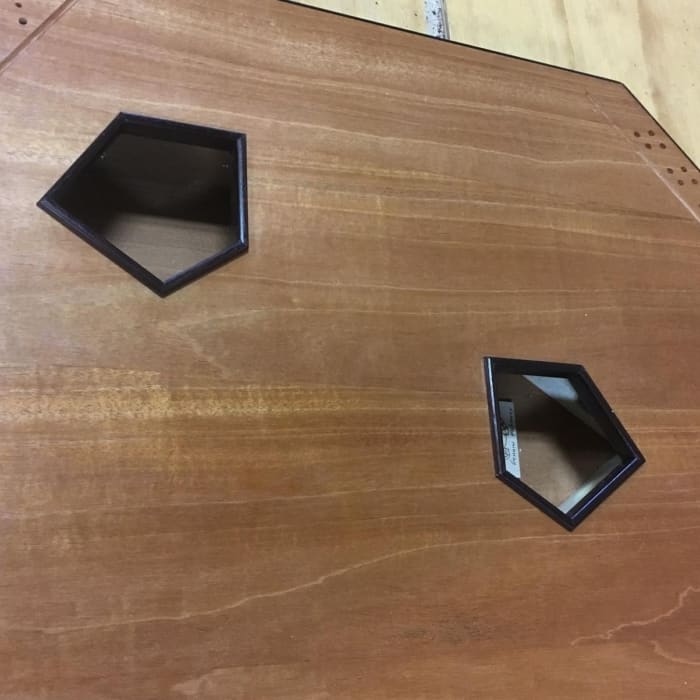 Q: Can I get you to put those pretty sound hole covers on my dulcimer?
Q: Can I get you to put those pretty sound hole covers on my dulcimer?
A: No, sorry. They can be pretty but as we have found them to be a bad idea acoustically. If sound hole covers or Rosettes as they are called are important to you, there are other builders (Dusty Strings, Masterworks, Rick Thum, etc.) who make a quality product and will gladly supply rosettes for you. We know all these folks, they are friends as well as good people and build good dulcimers. Don’t be afraid to buy from them!
Q: My dulcimer sounds thunky on the bottom two notes of the treble bridge, what can I do about it?
A: Not a lot, unfortunately. It is due to the physics of strings and is a problem with all large hammered dulcimers. I did the calculations several years ago trying to figure it out. If a string is going to sound its best, it needs to be stretched to around 70% of breaking tension. If we were to do that to all the strings of a 16/15, it would need to be 7 ft. long along the bottom rail. The top end is about right. Plotting it all out gives the familiar harmonic curve. But we can’t build dulcimers like that, they wouldn’t be portable, and we’d be reinventing the piano, and that is why a grand is shaped like it is.
So, like all musical instruments, a hammered dulcimer is a compromise. That is why we use several different gauges strings, to get the sound as even as we can. Some builders will put on bronze strings low on both bridges. Bronze has a different sound, and it can help but not cure the problem. We opted not to do that because bronze is brittle and breaks easily. We didn’t want folks needing to deal with that. Heavier strings will make a more solid note, but the heavier they are, the less freely they vibrate, and I don’t think they sound good above about a .026″. Heavier strings can be put on to good effect if they are wound. This can really help, but then they are very difficult to tune since they don’t slide freely over the bridge. You need to be a really, really good tuner.
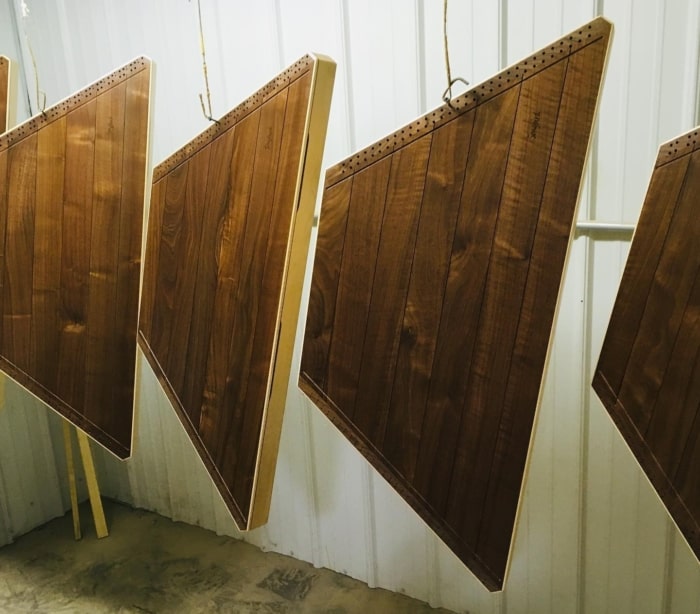 So what can be done about it besides putting on some other type strings? Learn your instruments strengths and weaknesses and play around them. It is what every good musician does with whatever instrument they have. Nothing is perfect, it is just the way the world is designed. On our dulcimers, the A on the right at the bottom of the treble bridge will be pretty good, but the E on the left will be more or less thunky. Well, that note has a duplicate, so I use it instead. If I really have to use a note on the lowest course, I tend to de-emphasize it, get off it quickly, just make sure it is there enough not to damage the arrangement.
So what can be done about it besides putting on some other type strings? Learn your instruments strengths and weaknesses and play around them. It is what every good musician does with whatever instrument they have. Nothing is perfect, it is just the way the world is designed. On our dulcimers, the A on the right at the bottom of the treble bridge will be pretty good, but the E on the left will be more or less thunky. Well, that note has a duplicate, so I use it instead. If I really have to use a note on the lowest course, I tend to de-emphasize it, get off it quickly, just make sure it is there enough not to damage the arrangement.
All this above applies to the larger dulcimers. 12/11s, 13/12s, etc. don’t have that problem since they are a lot closer to the optimum string length along the bottom rail.
Q: How do I take care of my hammered dulcimer?
A: Mostly just keep it in tune. Leave it out on its stand so you can easily go over and play something when you think of it. It will get dusty if you don’t cover it. To clean it, many folks keep a clarinet swab handy to reach under the strings. Or get a strip of sticky back felt and put it on a ruler. You can spray a little Endust or something similar on your ruler or swab, and it will really suck up the dust, but we don’t do that, just use the swab. To get down between pins and into places the swab won’t reach, use a soft bristle paint brush to loosen the dust, then just blow it away either with your breath or some canned air for cleaning your keyboard. Other than dusting, nothing needs to be done. Don’t use any oils except ones that dry. If some crud gets stuck on the finish, clean either with some mild soap and water, or with lemon or orange oil, these both dry. You can use furniture polish if you like, but only on the back and sides, not on the top as it will creep down around the tuning pins and can impair their function.
